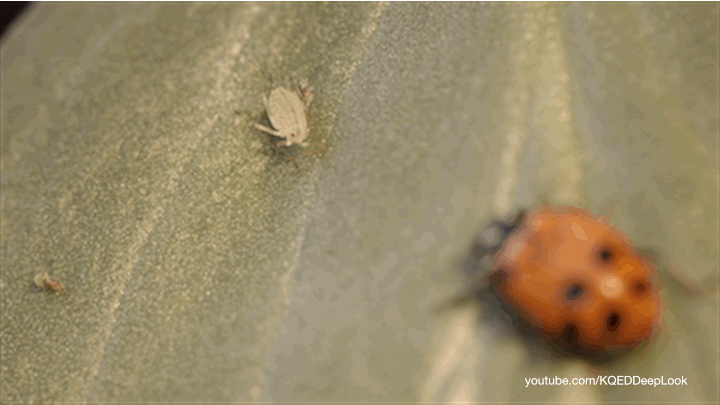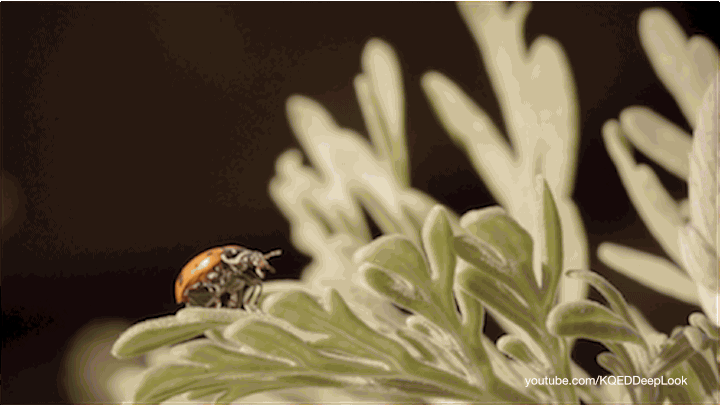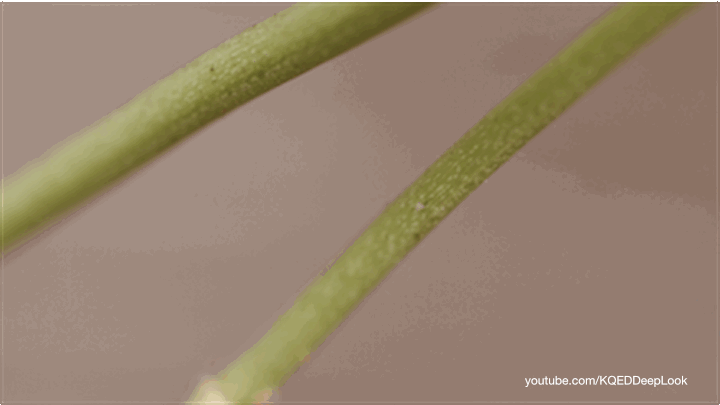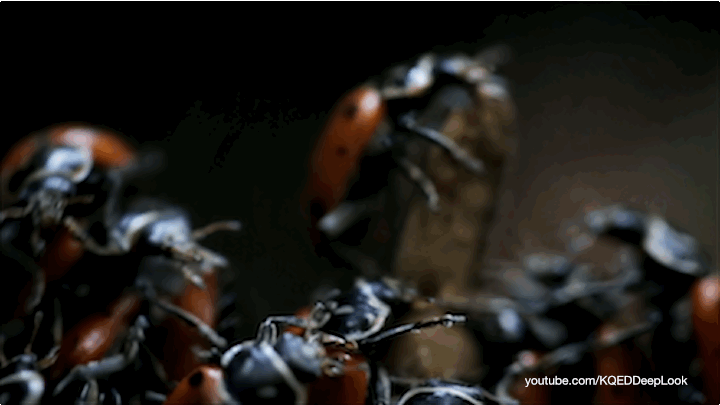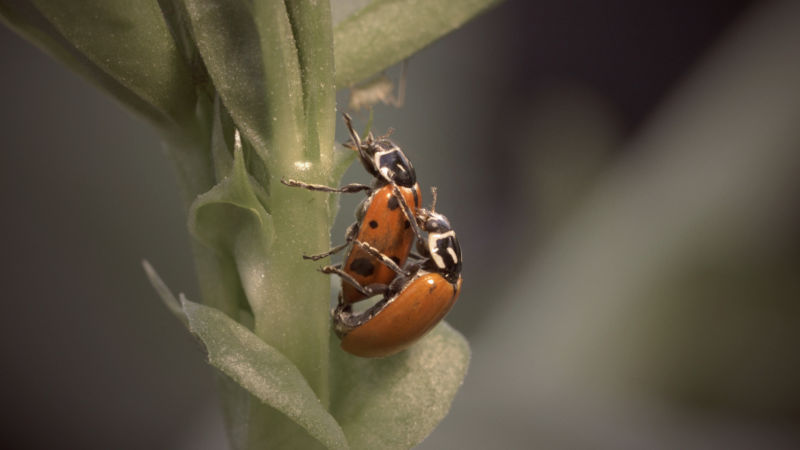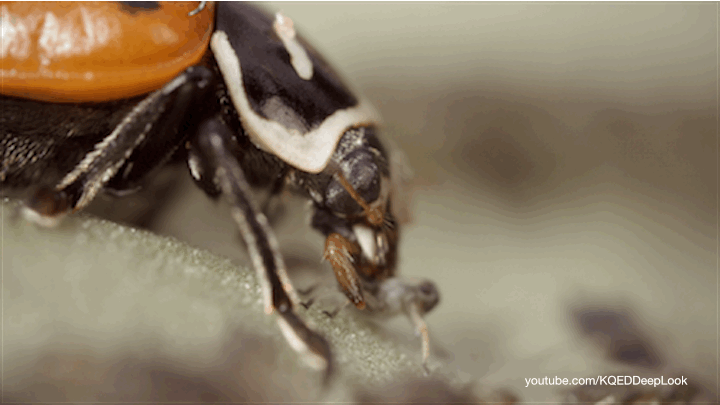With their charming spots and bright red bodies, ladybugs are pretty hard to miss. We’re used to seeing them alone, picking off sap-sucking aphids in the garden. But at certain times of year, ladybugs head for the hills to assemble in huge groups, called aggregations, clumping together in layers several bodies thick.
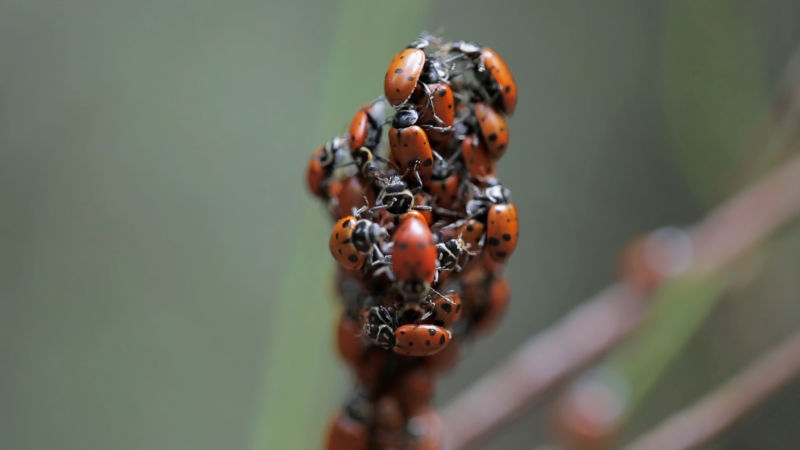
This arresting, almost uncanny sight—roiling masses of tiny red bodies jostling for position on rocks, logs, and branches—is typical of the “convergent” ladybug whose range covers a great deal of North America.
In the Bay Area, one of the best places to view ladybug aggregations is Redwood Regional Park in Oakland. Between November and February, numerous points along the park’s main artery, the Stream Trail, are swarming with the insects.
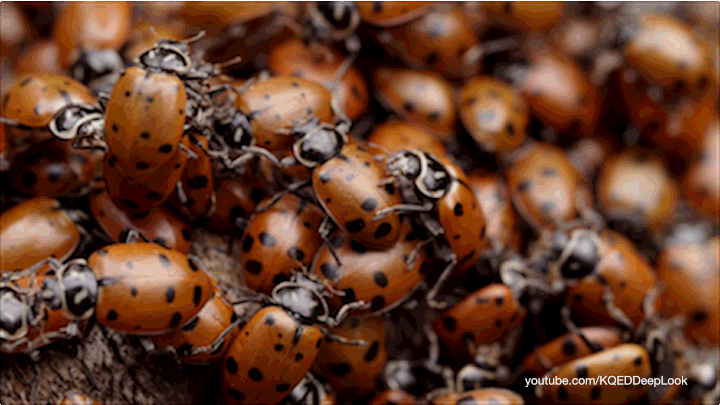
“People love ladybugs, ” said Michael Charnofsky, a naturalist with East Bay Regional Park District who leads ladybug walking tours. “And to see so many in one location is fascinating to people. Hundreds, thousands, tens of thousands…it’s outside the realm of their experience.”
Scientists believe the behavior evolved as a way for a solitary species to reproduce and to cope with a limited winter food supply. After fattening themselves up, and before bedding down for winter, these ladybugs are getting together to take care of some final business—namely, mating.
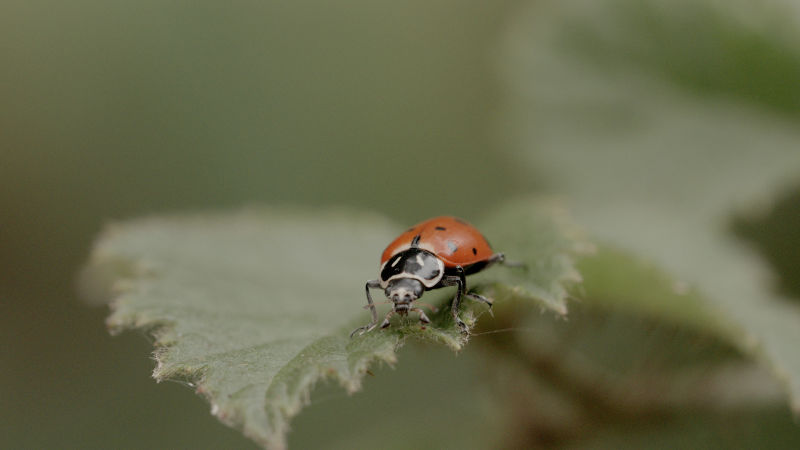
Ironically, convergent ladybugs, which are actually beetles, are not named for this behavior. The word “convergent” in their name refers to the characteristic white lines behind their heads.
